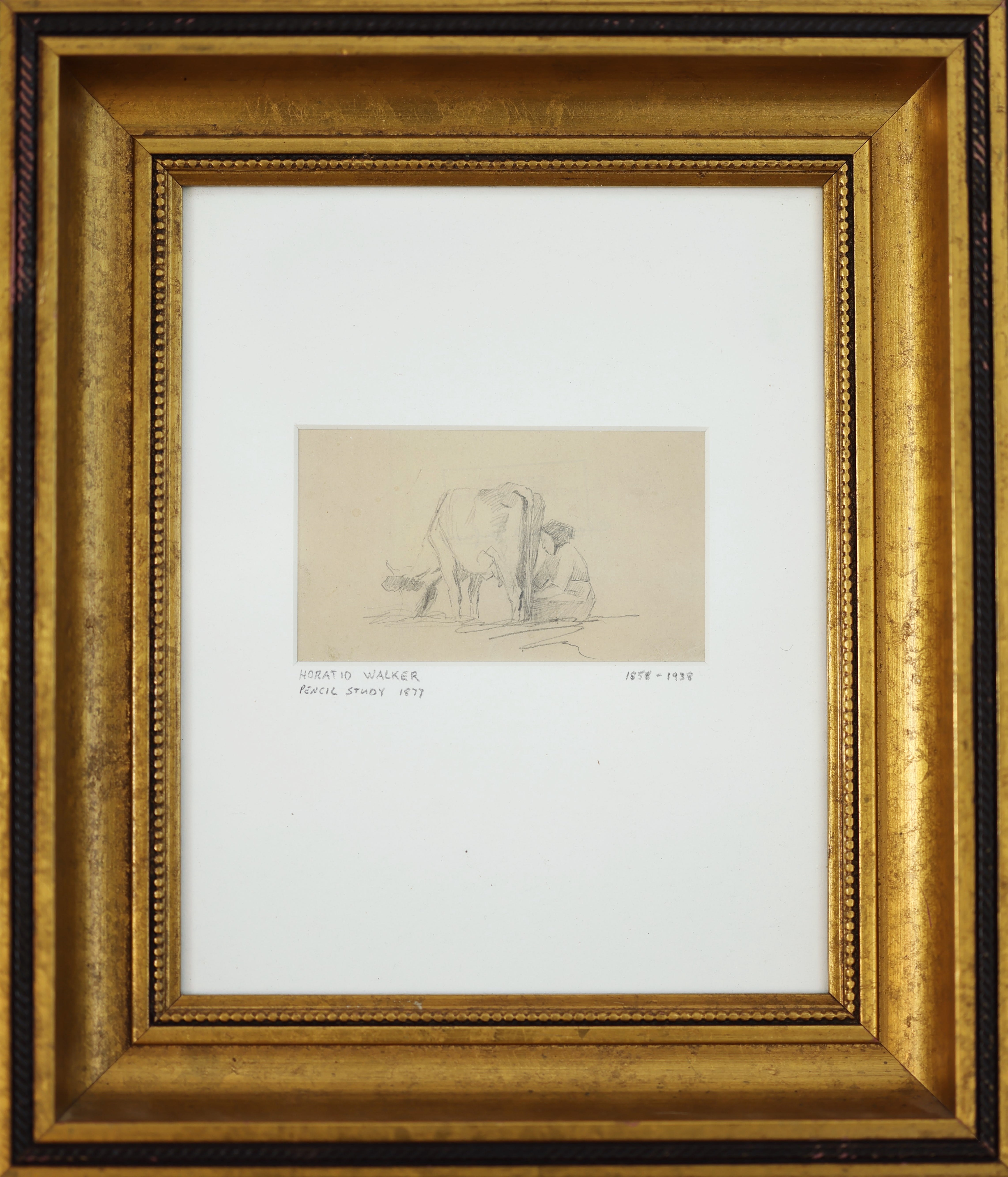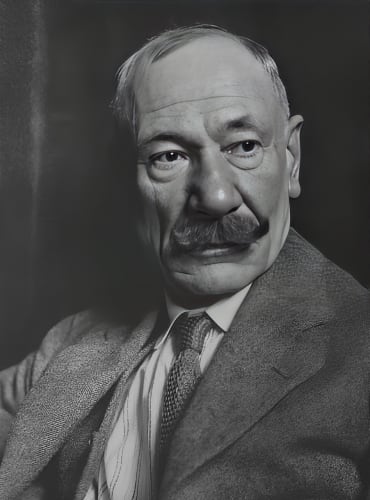Horatio Walker RI RCA LL.D. (May 12, 1858 – September 27, 1938) was a prominent Canadian painter, renowned for his idealized pastoral scenes of rural life in Canada, particularly in Quebec. Born in Listowel, Ontario, Walker was influenced by the French Barbizon school, evident in his works with their depiction of habitant life and landscapes.
Walker's artistic education began at the age of 15 when he moved to Toronto to apprentice with the Notman and Fraser photographic firm. There, he honed his skills in watercolour, miniature portrait painting, and landscape painting under the tutelage of artists like Robert Ford Gagen, John Arthur Fraser, and Lucius Richard O'Brien. This period marked the beginning of his lifelong dedication to capturing the essence of rural life.

Horatio Walker; Grazing By a Stream
In 1876, Walker moved to the United States, settling in Rochester, New York, before establishing a studio in New York City in 1878. His career took him on several trips to Europe where he further explored his artistic style by studying Dutch watercolours and the works of Jean-François Millet, deeply embedding the Barbizon influence in his art.
Walker's works were extensively exhibited, raising his profile internationally. His accolades include gold medals from the American Art Gallery in New York, the World's Columbian Exposition in Chicago, and the Pan-Pacific International Exposition in San Francisco. He was a founding member and later president of the Canadian Art Club and held memberships in numerous prestigious organizations such as the American Watercolor Society, the Royal Canadian Academy of Arts, and the National Academy of Design.
 Horatio Walker; Milking Time
Horatio Walker; Milking Time
His personal life was marked by tragedy, including the early deaths of his children and the permanent hospitalization of his wife, Jeanette, which, however, did not sway his artistic focus. Walker retired in 1928, moving to Sainte-Pétronille, Quebec, where he passed away in 1938. He has been designated as an Historic Person in the Directory of Federal Heritage Designations, and his work remains a vital part of Canada's national heritage, celebrated for its cultural authenticity and artistic beauty.


